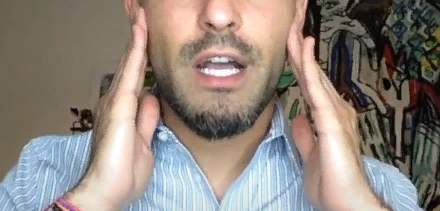Most adults have experienced acute toothache. Read about the causes, accompanying symptoms and ways to relieve this pain in our article.
For a sharp toothache, the causes can be different, but they are all associated with the state of the nerve endings in the pulp cavities: irritation is temporary, caused by external factors, or permanent, the cause of which is the pathological condition of the pulp. The nature of the pain syndrome is often so pronounced that it prevents the patient from leading a normal life and performing any activity in work or study.
Causes
Any toothache – acute, aching, tidal or constant – is caused by the negative effect of a certain factor on the nerve endings located in the pulp. The most common root cause of unpleasant sensations is deep caries: destruction of the enamel layer and dentin under it to such an extent that the nerves in the crown react to heat or taste stimuli, calming down after they disappear. In addition to caries, the cause of the pain syndrome may be mechanical cracks in the hard tissues of the crown, exposure of dentin in the cervical region, or an erroneously inserted filling material into the hole.
Much more unpleasant pain is accompanied by pulpitis, which is a logical development of caries: at this stage, an infection that has penetrated into the pulp chamber provokes inflammation of the soft tissues. For this reason, the pain does not subside for a minute, and at night it even tends to intensify – its strength is so great that it is given by stabbing sensations in the region of the temporal lobe and ear (in the direction of the trigeminal nerve).
Periodontitis and periodontitis can be considered similar processes – inflammation of the tissues surrounding the crown and its roots in the gums, leading to periodontal edema and weakening of the periodontal ligaments, which threatens the integrity of the entire tooth.
Symptoms
Pain is a key symptom of the disease, but its nature can vary, as can accompanying clinical signs:
with pulpitis, the pain subsides during the day and increases towards the evening, having a wavy character and intensifying with physical contact of the tooth with any object;
with periodontitis, pain is more intense, does not subside for a minute, which is associated with damage to the bone tissue around the apex of the roots. Damage to the ligamentous apparatus and the decay of nerve tissues not only causes discomfort, but also makes the tooth itself mobile, while any movement in the hole is accompanied by a new attack of pain;
if the cause of the disease is an abscess, then the periodontium around it will differ from healthy tissue by the presence of edema and hyperemia, supplemented by a feeling of pulsation in the gums. A localized abscess in some situations does not cause pain if the nerve endings are dead, but this scenario can lead to the development of osteomyelitis.
Diagnosis
It is possible to determine the cause of negative sensations not only by subjective data obtained from the patient during his interview, but also using X-rays or computed tomography, which will confirm and clarify the diagnosis. Caries will require cleaning the canal and removing the damaged dentin with subsequent filling, while pulpitis involves opening the pulp chamber, removing nerves and blood vessels, and then introducing the drug with filling material. In advanced cases, it may be necessary to remove the entire tooth, or – if the problem lies in an abscess – to open the soft tissues surgically and eliminate the cause of the inflammation.
Treatment for Acute Toothache
However, all these measures may not be available to the patient in an unfortunate combination of circumstances, so you need to be ready to self-relieve pain up to contacting the dentist. First of all, you need to ensure maximum peace and cleanliness in the area of discomfort, for which it will be necessary to carefully brush the tooth from possible food debris, and the rest of the time to refuse food and drinks, especially hot and cold. Next, you can rinse your mouth with a slightly warm soda solution and take a potent analgesic.
Related article: List of best and strongest painkillers for toothache.
The usual paracetamol or analgin may be too weak for toothache, but they are much cheaper and more affordable than the listed drugs. It must be remembered that, contrary to misconceptions, alcoholic beverages are not pain relievers, and their combination with medications can aggravate the patient’s condition.
As for the folk remedies available in conditions of remoteness from dental offices, healers are advised to apply plantain roots to a diseased tooth, which have previously been well washed in water. Another remedy is finely chopped garlic wrapped in gauze, which must be pressed against the wrist from the side of the diseased tooth for a while, so that its absorbed transcutaneous analgesic substances through the nerve canals affect the pulp tissue.






